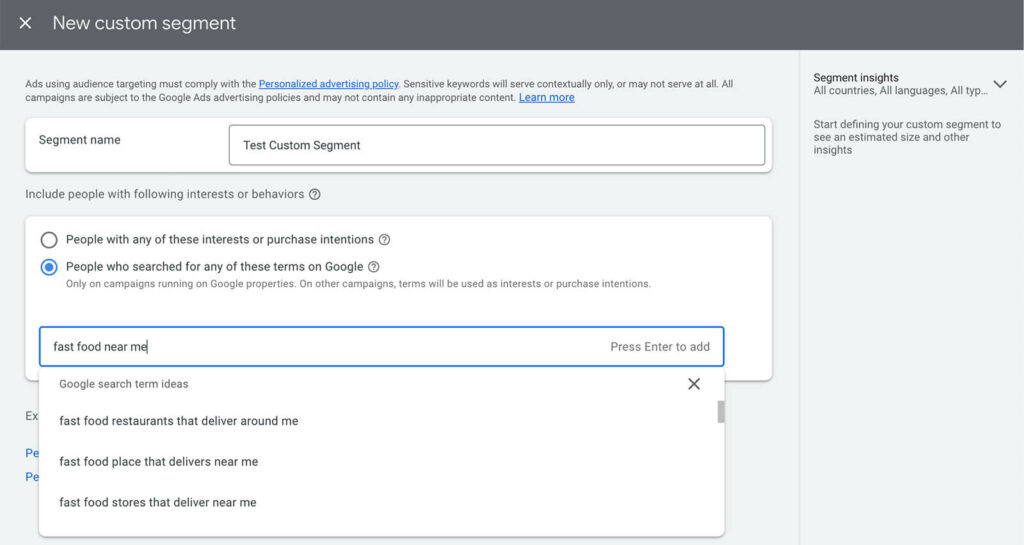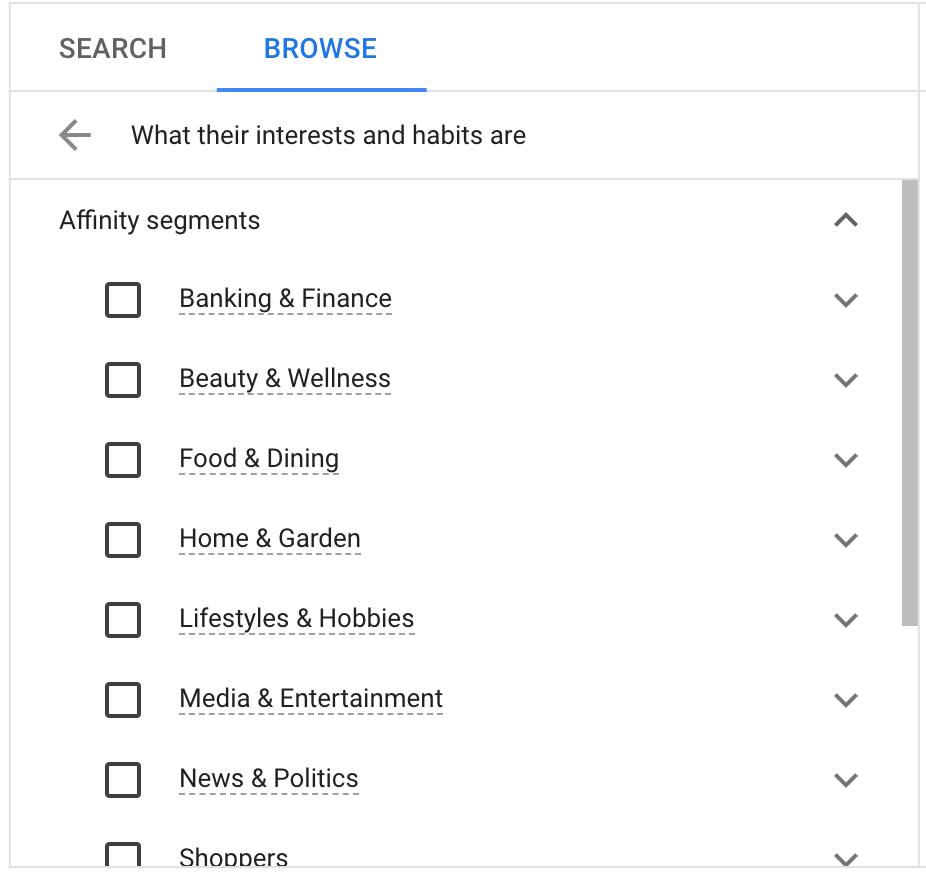Post map
ToggleIn today’s technologically advanced landscape, the majority of businesses and users rely on Google to craft their sales promotion strategies. One crucial element within Google Ads is audience segmentation. What exactly is audience segmentation in Google advertising? How to use audience segments in Google ads Let’s delve into these questions together in today’s article with Optimal FB!
Learn about audience segmentation in Google ads
Google has introduced new terminology in audience reporting throughout Google Ads. For instance, the term “audience type” (including custom audiences, intent-based audiences, and affinity audiences) is now referred to as audience segmentation, while “remarketing” has been replaced with “user data.” Audience segmentation plays a significant role in the Audience Manager tool, where you can create and manage segments based on your data. Through data-driven campaigns, you can control which audience segments see your ads across platforms like YouTube, Gmail, Google Search, and the Google Display Network. When you set up an Audience Source, you can display ads to a segment either created by you or generated by Google Ads. This aids in optimizing your advertising campaigns and achieving the best performance from your target audiences.

How does Google audience segmentation work?
In Display, Search, Video, Hotel, and Shopping campaigns, audiences consist of segments or groups of people with specific interests, intents, or demographic information predicted by Google. When you add an audience to a campaign or ad group, you can choose from various segments. These may include sports and travel enthusiasts, car shoppers, or people who have visited your website or app. Google Ads will display ads to people likely to belong to the selected categories. Audiences are determined based on users’ activity when they use Google products and third-party sites or inferred based on content that certain groups of users are likely to be interested in. Activity and content on third-party websites are primarily used for audience segments on those websites, while activity and content on Google products are mainly used for audience segments on those products.
Types of Audience Segmentation in Google Advertising:
- Affinity Audiences: Reach users based on their passions, habits, and interests.
- Custom Audiences: Reach your ideal audience by inputting relevant keywords, URLs, and related apps.
- Demographic Targeting: Reach users based on data about their lives.
- Life Events: Reach users when they undergo significant milestones.
- In-market Audiences: Reach users based on their recent purchase intent.
- Your Data Audiences: Reach users who have interacted with your business.
- Website and App Visitors: Reach those who have visited your website or app.
- Customer Match: Reach current customers based on data in your Customer Relationship Management (CRM) system.
- Similar Audiences: Reach new users with similar interests to your website visitors or current customers.
How to use audience segments in Google ads
To access Audience Segmentation:
Step 1: In your Google Ads account, click on the Tools Icon.
Step 2: Click on the Shared Library dropdown menu.
Step 3: Next, click on Audience Manager.
Step 4: You’ll be directed to the “Your Data Audiences” page by default.
To organize segments based on data:
Audience segments will be displayed in a table with a maximum of 50 segments based on data. In this table, you’ll see the segment names, checkboxes for batch actions, and quick info, including:
- Display type for people in this data-based segment and how the segment was created.
- Member status indicates whether a segment continues to add users or not.
- Scale column showing the number of people reachable across each network (Search Network, YouTube, Display Network, and Gmail) within your data-based segment.
- Labels help you organize keywords, ads, ad groups, campaigns, or your data-based segments into groups so you can filter and report on data you care about.
You can click on any category in the categories above to sort the entire table around a category. For example, you can sort your segments by “Usage Status” to quickly see segments currently in use and segments currently not in use.
Click on the checkbox next to a segment name to open a blue toolbar menu with options to add your segment to an ad group or campaign, edit the segment, or apply a label. You can click on multiple checkboxes to apply this action to multiple segments. Additionally, you can add optional columns to the table by clicking the Optional columns icon Column icon at the top right.
Your data-based segments in the “Audience Segmentation” table can also provide additional context descriptions such as how the segment was created or the source of the segment.
In this article, Optimal Fb has shared with you the most accurate and detailed information, hoping that our content can assist you in understanding audience segmentation in Google advertising and mastering the use of audience segmentation in Google advertising proficiently.

Contact Info
Information about “How to use audience segments in Google ads” hopes to provide you with additional necessary knowledge. At optimal FB, there is a team of highly qualified and experienced staff and experts who will provide facebook advertising account as well as support when you run Facebook ads. Contact us via phone number: +84 564 104 104.
Frequently Asked Questions
When using audience segmentation in your advertising campaigns, there are a few important points to keep in mind. First of all, clearly define the goal of the campaign to choose the most suitable segment. Next, classify your target audience by criteria such as interests, online behavior, or demographic data to increase accuracy. At the same time, always test and optimize the performance of segments to adjust and improve campaigns. Ensure compliance with privacy regulations and continuously update segmentation to reflect changes in the market and consumer behavior.
In Google’s advertising strategy, audience segmentation plays an important role in shaping and optimizing advertising campaigns. By dividing users into groups based on interests, online behavior, or demographic data, audience segmentation increases your chances of reaching the right target audience. This helps optimize advertising costs and improve campaign performance by delivering relevant and attractive messages to each target group. In this way, audience segmentation helps increase conversion rates and is an effective tool for optimizing advertising strategies on the Google platform.


